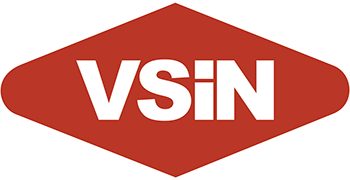Key Stats to Predict 2025 NFL Improvement and Decline:
Bettors are already ramping up their activity regarding all the offseason futures wagering options available in the market. DraftKings has set their season-win props for all 32 teams as well as game-by-game lines and totals for all 272 scheduled regular-season contests. Typically, there aren’t any obvious misses by oddsmakers when it comes to these wagering options, as those would have been immediately attacked hard and modified. With that said, one of the best ways to gain an advantage over the house on these options is to use stats from the prior season that have historically been very reliable for predicting the teams that are due to improve or decline.
The NFL is unlike any other sporting league in that teams can make quick, definitive turnarounds from year to year, both positively and negatively. First-to-worst and worst-to-first are not unusual terms, and you can see seasons where more than half of the teams that qualify for the playoffs are different from the prior campaign. I personally believe this parity is one of the contributing factors to the league being so popular.
Besides the return to normalcy that these unusual stats might bring on, I have forever believed that there are also three “C’s” that can factor into this sudden change as well. The first is Coaching, either by a change to a new guy or from improvement by the current man. The second is Confidence, which can quickly transform after a solid offseason and/or the first couple of good regular-season games. The third is Cohesiveness, and this can also be impacted rather quickly, with the addition or departure of certain personnel.
Of course, there are certain statistical indicators that a team exhibits in one season that can illustrate how close they are to changing the status of those three C’s and eventually, their fortunes the next season. You will find more of that key data below. Read through these findings, combine them with what we already learned a week ago, any coaching or free agent transactions each team made, as well as their draft results, and then head to the betting window. I will share my own personal conclusions for season win totals when I wrap up my NFL offseason studies in the next week or two.
Systems of teams that had a negative turnover differential the prior season
Since 2009, there have been 43 teams that had negative turnover differential and won less than six games against the spread. All but two of those improved their ATS winning percentage the next season, by an average of 22%. All but seven of these teams improved their outright winning percentage as well, by an average of about 20%, and 13 of them qualified for the playoffs. Note that Atlanta and New England qualify for this angle for a second straight season, part of an unusually high number of qualifiers for 2025.
Teams affected for 2025: Atlanta, Cleveland, New England, NY Giants, NY Jets, San Francisco, Seattle, Tennessee
Since 2020, there have been 15 teams that endured a turnover differential of -0.6 per game or worse and did not make the playoffs. All but two of those teams improved the next season. The average regular season win improvement was 3.8 wins per season for the other 10 teams. The only two that didn’t were the Bears from 2021 to 2022, and the Patriots last year, although they matched won-lost marks. The Vikings and Commanders qualified on this system last year, and improved by seven and eight regular season wins respectively, so there is huge potential with this one. Do you see any teams on the list below capable of massive jumps in 2025?
Teams affected for 2025: Cleveland, Jacksonville, Las Vegas, New England, Tennessee
There have been 18 teams since 2009 that had a negative or even turnover differential yet still managed to win double-digit games against the spread. Eleven of those teams reached the postseason the next year, including the Lions and Rams last year. For this season, we have one of the three teams that qualified that even reached the postseason despite their lack of turnover luck, the Bucs.
Teams affected for 2025: Arizona, Jacksonville, Tampa Bay
Of the 32 teams that improved their won-lost percentage by 34% or more from one season to the next since 2009, all but four had negative or even turnover differentials in the prior season. Last year, the Chargers, Vikings, and Washington all met the criteria and were the only three teams to improve by that much, essentially 6+ wins.
Teams POTENTIALLY affected for 2025: Arizona, Atlanta, Carolina, Cleveland, Dallas, Indianapolis, Jacksonville, Las Vegas, Miami, New England, New Orleans, NY Giants, NY Jets, San Francisco, Seattle, Tampa Bay, Tennessee
Systems of teams that had a positive turnover differential in the prior season
Teams that had a positive turnover differential and won 10 or more games against the spread are fade teams in the next season. Of these 94 teams since 2009, 63 of them had won-lost records that declined by an average of 10% both outright and against the spread. Furthermore, of the 85 that reached the playoffs, 35 failed to do so in the follow-up season, including Dallas & Miami last year. You’ll see the number of qualifiers for ’25 is 10, after only six a year ago.
Teams affected for 2025: Baltimore, Buffalo, Cincinnati, Denver, Detroit, LA Chargers, Minnesota, Philadelphia, Pittsburgh, Washington
Only two of the last 21 teams since 2020 that had a turnover differential of better than +0.5 per game improved their record the next season. The average won-lost percentage decline of the other 11 teams was 16.1% (10% ATS), or about 2.7 wins per season. San Francisco was one of eight teams that qualified on this angle going into 2024 and saw the biggest drop from 12-5 to 6-11. None of those eight teams improved last year.
Teams affected for 2025: Buffalo, Detroit, Green Bay, Houston, LA Chargers, Minnesota, Philadelphia, Pittsburgh
Since 2009, there have been 45 teams with a turnover differential of +5 or better in a season and failed to reach the postseason. Only 13 reached the postseason the next year, and only 16 improved their records. These are typically play against teams, as failing to reach the playoffs does not provide for momentum the next season. This group included Cincinnati, New Orleans, and the Giants a year ago.
Team affected for 2025: Chicago
Only 13 of the last 47 teams that had a positive turnover differential and were less than .500 against the spread in a season reached the playoffs the next season, and only 19 improved. Four teams qualified on this system a year ago, but only two do in 2025
Teams affected for 2025: Houston, Kansas City
Of the 13 teams that declined their ATS won-lost percentage by 31% or more from one season to the next since 2009, ALL had positive turnover differentials of +4 or better the prior season. No teams ended qualifying on this last season.
Teams POTENTIALLY affected for 2025: Baltimore, Buffalo, Chicago, Denver, Detroit, Green Bay, Houston, Kansas City, LA Chargers, LA Rams, Minnesota, Philadelphia, Pittsburgh
Systems of teams whose offense/defense production or point differential stats from the prior season didn’t accurately reflect their won-lost record
Since 2001, there have been 52 teams that managed to win 10+ games despite scoring less than 23 points per game in season. In the follow up season, only 10 of these teams improved, while 38 dropped, by an average of 4.3 games in the win column. Kansas City defied this system last year by going from 11-6 to 15-2. For 2025, we have an unusually high five teams qualifying, including the Chiefs and Steelers for a second straight season.
Teams affected for 2025: Houston, Kansas City, LA Rams, Pittsburgh, Seattle
There has been fairly steady season-to-season improvement made from the group of teams that have won less than 42% of their regular season games despite scoring 22+ PPG. Since 2000, only four of the 31 teams were worse the next season, and the average win improvement was about 2.5 per season. Las Vegas qualified on this most recently in 2023 and improved by two games. Nobody qualified last season.
Team affected for 2025: San Francisco
Since 2000, there have been 77 teams that somehow won less than 42% of their games despite allowing 23 or less points per game in season. In the follow-up season, 50 of these teams, or 64.9% of them, improved in the win column, and the average improvement of that group was 3.6 wins per year! However, in a rare bucking of the system last year, three of six qualifiers declined, including Chicago, who qualifies for a second straight season.
Team affected for 2025: Chicago
There has been a consistent season-to-season decline in the group of teams that have won 10 or more games despite allowing 23+ PPG. Over the last 26 seasons, only five of the 34 teams were better the next season, and the average win drop-off was 2.97 per season.
Team affected for 2025: Washington
There have been 13 teams that have scored 27+ PPG in the last 22 seasons and did not make the playoffs. The combined record of those teams in the follow-up regular season was 129-81, good for 61.4% and an average of 9.92 wins per season. Only three of those teams did not make the playoffs, and two others, the 2009 Saints & 2020 Buccaneers, went on to win a Super Bowl title. The Chargers last qualified on this system in 2022 and went exactly 10-7, earning a playoff berth.
Team affected for 2025: Cincinnati
If you examine positive point differential with a losing record, only three of the last 19 teams that had this combination worsened their win total the next season. Two recent Super Bowl Champion teams met this criterion, the 2017 Eagles and the 2020 Buccaneers. The average win total for the 16 teams was 9.5, with eight of them winning at least 11 games, and the average win improvement was 2.94 per season. However, Las Vegas bucked this trend a year ago in dropping by four wins.
Team affected for 2025: Arizona
When considering negative (or even) point differential with a .500 or better record, only nine of the L40 teams to achieve this dubious honor went on to a better season the next year, although three of them came in the last two years, including Seattle last year. The average drop for the other 31 teams was -2.4 wins per season. Those wins could be the difference in making the playoffs or not as the margin for teams like this is already small.
Teams affected for 2025: Houston, LA Rams
Combination systems using statistical traits detailed already
There have been nine teams that have gone sub-.500 in a season despite a positive turnover differential and scoring differential, six of them have turned around the next season and made the playoffs, improving by an average of 3.2 wins per season.
Teams affected for 2025: NONE – Arizona was closest with a -3 TO differential
Nine of the last 15 teams that had a negative turnover differential but positive score differential and didn’t make the playoffs did so the next season, including Super Bowl Champion Tampa Bay in 2020, as well as the Chargers in 2022.
Teams affected for 2025: Arizona, Seattle
Only 12 of the last 53 teams that had a positive turnover differential but negative (or even) score differential qualified for the playoffs in the next season, although two of the seven qualifiers did in 2024, Denver and Pittsburgh. This year, we have just three teams qualifying.
Teams affected for 2025: Chicago, Houston, LA Rams
All but two of the 26 teams since 2009 that had a negative turnover differential and were outscored by more than 10 PPG improved their won-lost record the next season, by an average of 24.8%, or 4.0 wins per team. Six of those teams made the playoffs, and 14 of them improved by four or more wins. Washington was the biggest winner on this system a year ago, winning eight more games and reaching the NFC title game.
Team affected for 2023: Carolina, Cleveland
Only 10 of the 47 teams since 2009 that had a positive turnover differential and outscored opponents by more than 8.0 PPG improved their won-lost record the next season. The average won-lost percentage decline was 13.8% (13% ATS), or about 2.4 wins per season. This included the Ravens, Cowboys, and 49ers a year ago.
Teams affected for 2025: Baltimore, Buffalo, Philadelphia, Detroit






